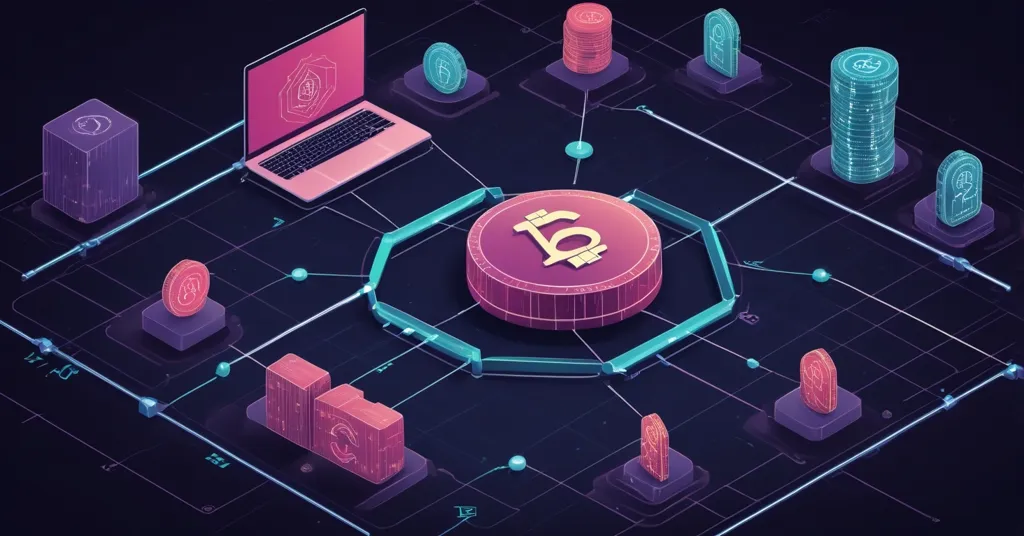Circle’s Refund Protocol: A Game-Changer for Stablecoin Dispute Resolution

Circle Launches Refund Protocol: Revolutionizing Stablecoin Payments
Circle, the company behind USDC, has unveiled the Refund Protocol, a smart contract platform aimed at bolstering the reliability of stablecoin payments through non-custodial dispute resolution and refund capabilities.
- Launched on April 17, 2023
- Facilitates refunds and dispute resolution for stablecoin transactions
- Utilizes smart contracts to temporarily hold funds
- Challenges include higher gas costs and complexities in setup
The Refund Protocol operates by temporarily holding funds in a smart contract whenever a payment is made using USDC or any ERC-20 token. ERC-20 tokens are a type of token standard on the Ethereum blockchain. Should a dispute arise, the buyer can request a refund, and an unbiased arbiter steps in to mediate the situation. This arbiter can only approve a payment or a refund and cannot move the money to another address, ensuring the funds remain non-custodial, meaning no single party has control over the funds.
For sellers, the protocol offers early access to funds by paying a small off-chain fee, which is validated by a digital signature. This feature enhances flexibility and transparency, akin to giving sellers a clear view of the transaction process.
Jeremy Allaire, Circle’s CEO, sees the Refund Protocol as a step towards mainstream adoption of stablecoin payments.
“Circle’s Refund Protocol changes that by letting users send payments through a smart contract that temporarily holds the funds.”
This innovation aims to bridge the gap between traditional finance and the decentralized world, enhancing the practicality of on-chain payments.
However, the protocol is not without its challenges. Higher gas costs associated with smart contract interactions could deter businesses with high transaction volumes. Additionally, setting up refund addresses can be complex, particularly for users dependent on custodial wallets or fiat on-ramps. These obstacles are significant hurdles in achieving widespread adoption.
While the Refund Protocol marks a significant advancement for stablecoins, it’s worth considering the perspectives of bitcoin maximalists, who might argue that the true innovation of cryptocurrencies lies in their simplicity and security. They might view such protocols as adding unnecessary complexity. Yet, in the spirit of effective accelerationism, we must recognize that altcoins and other blockchains, like Ethereum, serve unique purposes that can propel the broader adoption of crypto technologies.
The Refund Protocol is designed specifically for ERC-20 tokens, offering built-in support for lockups, refunds, and dispute resolution. This level of functionality could make on-chain payments more appealing for everyday use, despite the potential for higher costs and setup complexities.
Looking forward, Circle has hinted at potential future upgrades, such as integrating lending protocols like Aave to monetize locked funds. This could further enhance the protocol’s utility, potentially distributing earnings between recipients and arbiters.
The launch of the Refund Protocol aligns with USDC’s recent integration as the default currency for new users on Binance Pay, signaling a strategic move to enhance USDC’s utility and acceptance. This initiative underscores the growing importance of stablecoins in bridging traditional and decentralized finance.
The journey towards a fully decentralized financial system is ongoing, and innovations like Circle’s Refund Protocol are crucial steps in making these technologies more user-friendly and secure. Yet, as we embrace these advancements, it’s essential to remain cognizant of the challenges and to keep pushing for simplicity and accessibility in the crypto ecosystem.
Key Takeaways and Questions
- What is Circle’s Refund Protocol?
Circle’s Refund Protocol is a smart contract platform designed to enable refunds and non-custodial dispute resolution for stablecoin payments, particularly for ERC-20 tokens.
- How does the Refund Protocol work?
The Refund Protocol holds funds in a smart contract, allowing buyers to request refunds if issues arise. An unbiased arbiter facilitates the dispute resolution process, ensuring the funds remain non-custodial.
- What are the main benefits of the Refund Protocol?
The main benefits include enabling refunds, enhancing the safety and practicality of on-chain payments, and maintaining a non-custodial approach to dispute resolution.
- What challenges does the Refund Protocol face?
Challenges include higher gas costs and difficulties in setting up refund addresses, particularly for users relying on custodial wallets or fiat on-ramps.
- Which tokens does the Refund Protocol support?
The Refund Protocol is designed to support ERC-20 tokens, including built-in features for lockups, refunds, and dispute resolution.



